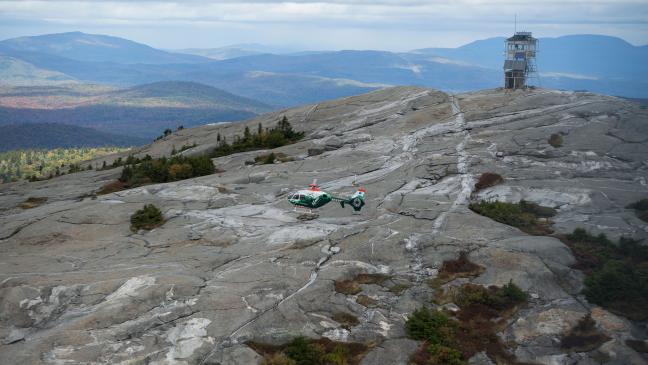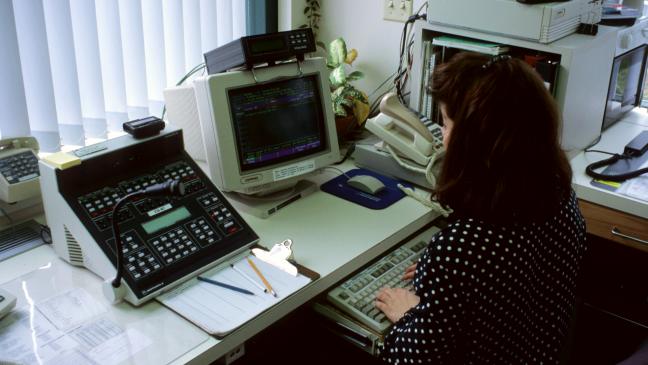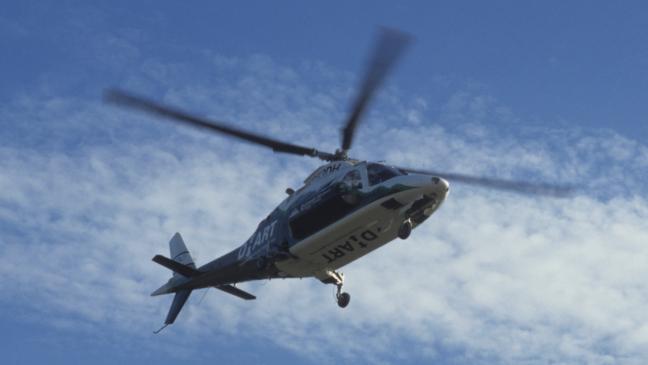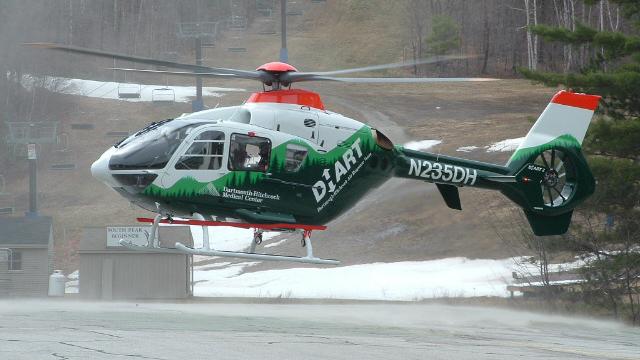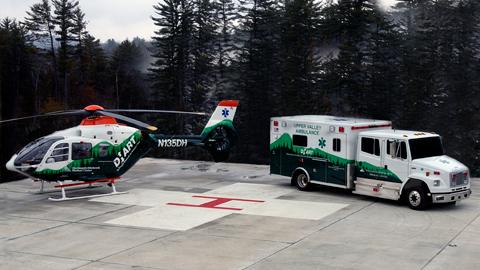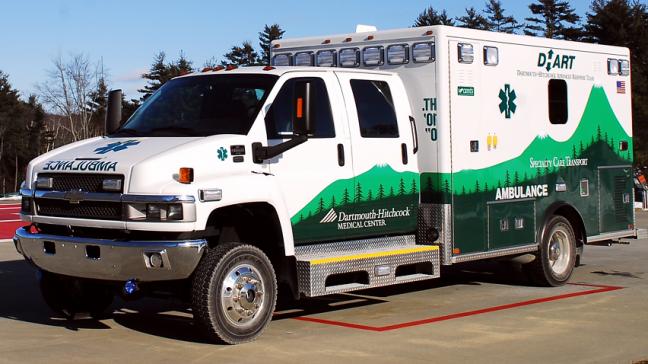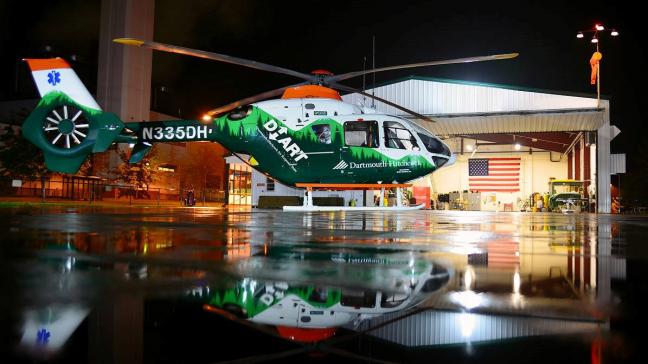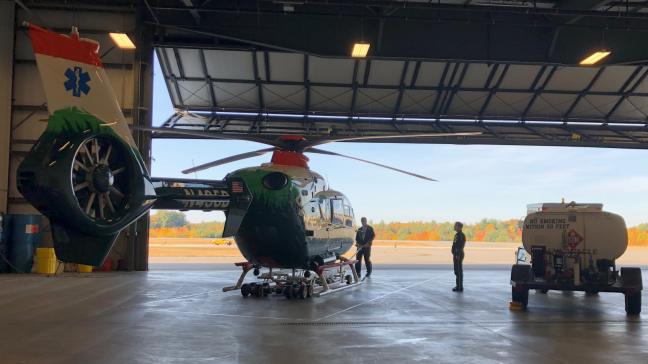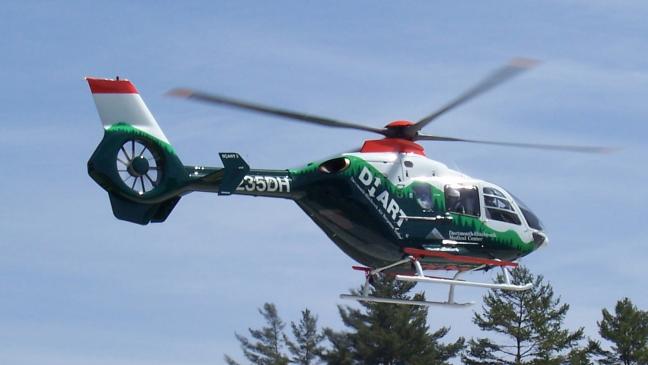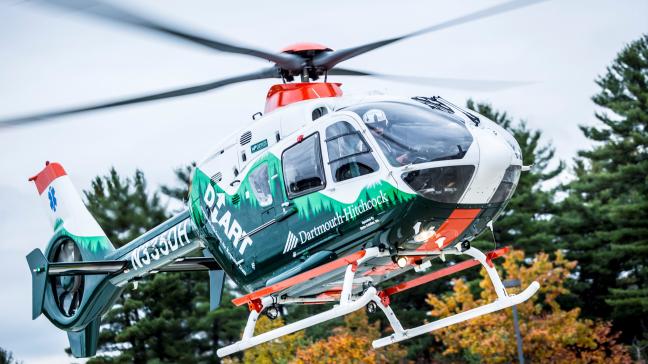Learn about the history of DHART by year:
- 1994: DHART begins operations
- 1996: Certificate Of Need (C.O.N.) granted
- 1998: New helicopter put into operation
- 1999: New on-site hangar opened
- 2001: Ground-Mobile Intensive Care Unit added
- 2003: New hangar opens
- 2008: Manchester base established
- 2014: 2014: 20-year anniversary celebrated
- 2018: New partnership established
- 2019: 25-year anniversary marked
1994: DHART begins operations
On July 1, 1994, DHART began operations and received our first request seven minutes after going on-line. DHART was designed to serve the Northern New England region of New Hampshire, Vermont, upstate New York, and western Maine.
Since DHART's inception, the program has grown both in the number of requests and number of completed flights. DHART began as a 3-year trial program at Dartmouth Hitchcock Medical Center. Now, over twenty years later the DHART team, along with our aviation vendors at Metro Aviation Inc, continue to provide this vital lifesaving service to our region as a permanent department at the center.
1996: Certificate Of Need (C.O.N.) granted
In 1996, the Vermont Health Care Authority (since replaced by the VT Public Oversight Commission) granted DHART a temporary Certificate Of Need (C.O.N.) with the understanding that a medical review committee is formed to evaluate the appropriateness and effectiveness of the DHART Helicopter program in Vermont.
The committee included three emergency physicians, three emergency/trauma nurses, and three general surgeons from Dartmouth Hitchcock Medical Center and several Vermont hospitals, among them Fletcher Allen Health Care in Burlington (now the University of Vermont Medical Center).
The committee completed its review (of 107 patient flights from February to November of 1996) and recommended that DHART be allowed to continue operations in Vermont. The Committee continues to meet on a quarterly basis to review patient transports in the State of Vermont.
1998: New helicopter put into operation
On December 30th of 1998, DHART put a new helicopter into operation: An American Eurocopter EC135 operated by Metro Aviation Inc., capable of cruising at 150 miles per hour. It also represented the latest in aviation technology which allowed DHART to meet the mission of providing care to the critically ill and injured patients in Northern New England.
The EC135 provides greater lifting capability which is important when operating at high altitudes during our hot and humid summer months.
1999: New on-site hangar opened
On March 1st, 1999 we moved into DHART's new on-site hangar, which is located next to the helipad by the Emergency Department at DHMC. It provided an enclosed and protected space for the primary aircraft and the back-up helicopter. The hangar also provided office space for the crew and Metro Aviation EMS pilots and housed the state-of-the-art communications center.
DHART celebrated its five-year anniversary on July 1, 1999, with a ceremony at the new DHART Hangar and Operations Center. It was attended by former patients, dignitaries, and media.
2001: Ground-Mobile Intensive Care Unit added
The year 2001 brought many improvements to the DHART program. We added the DHART Ground-Mobile Intensive Care Unit to the DHART transportation system. DHART Ground provides interfacility (hospital to hospital) critical care transport services to surrounding hospitals in the region. This has proven to be a very important addition to our program.
In conjunction with Metro Aviation Inc, we replaced the 1999 Visual Flight Rules (VFR) EC135 with a 1999 model year Instrument Flight Rules (IFR) EC135 in July. This brought added important safety features to our operations. The new aircraft has a full-color radar system for monitoring current weather conditions as well as adding auto-pilot capabilities.
Additionally, we added live satellite tracking to the helicopter so DHART Communications may follow our progress on a direct satellite link to one of our three PCs in the communications center. This system updates aircraft position reports on a moving map display every fifteen seconds and increases safety.
2003: New hangar opens
2003 brought many changes at DHART. Due to construction at DHMC, a new and improved hangar was built in the North parking lot just below the Emergency Department, across from the power plant. We moved in on February 17. The hangar allowed all of our operations to be centrally located. It housed our larger communications center, Metro Aviation EMS Pilots quarters, a crew room - which has a work station for each crew member on duty - and bays for each ambulance, including room for DHART 1 and DHART 2.
A month later on March 17, DHART 10 was put into service. DHART 10 is a highly customized Lifeline Ambulance on a Freightliner chassis. DHART 11, our other ground unit, was also placed into service, as a backup to DHART 10. Both of our ground ambulances are capable of transporting two stretchers or two isolettes. All of our air and ground vehicles sport the same paint scheme as DHART 1.
2008: Manchester base established
Alongside our partners at Metro Aviation Inc., DHART has continued to develop at the forefront of air and ground critical care transport services. A second base was established in Manchester, NH in 2008 providing much-needed service to the southern areas of the state. The use of night vision goggles is standard in all DHART night-time operations and a low-level IFR (instrument Flight Rules) route structure is now well established.
2014: 20-year anniversary celebrated
In 2014 DHART celebrated 20 years of bringing lifesaving service to the region with over 23,000 patients transported by air or ground ambulance.
2018: New partnership established
Continued growth
DHART transports:
- 2018: 1,926 patients
- 1994: 320 patients
Mix of transports:
- 85.6% inter-facility
- 14.4% scene
—Data from 2018
DHART formed a partnership with the University of Vermont Medical Center that went live in October of 2018. The goal was to increase air medical transportation coverage for the region by having a helicopter stationed in Burlington, Vermont. Like the helicopters in Lebanon and Manchester, Healthnet 4 is also an EC 135 with a medical crew that operates under the same advanced clinical guidelines as the DHART program.
2019: 25th anniversary marked
DHART's 25th anniversary was celebrated in 2019. The DHART program has received outstanding support from the citizens of both Vermont and New Hampshire, as well as upstate New York and Maine public safety agencies, hospitals, and EMS colleagues.
We look forward to many more years of continued service to the people of Northern New England.
